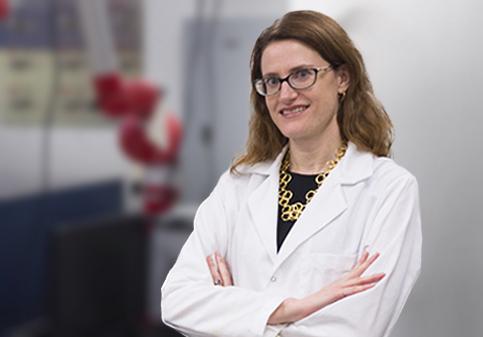New technology could change the way we charge everything from phones to electric vehicles

Credit: Texas A&M University College of Engineering
Texas A&M University professor Dr. Jodie L. Lutkenhaus is one step closer to realizing her goal of creating a battery made entirely of polymers, which has the potential to charge and discharge much faster than traditional batteries. Lutkenhaus, an associate professor in the Artie McFerrin Department of Chemical Engineering, has detailed her most recent findings on these polymers in a paper in Nature Materials.
A major hurdle to creating a metal-free, 100-percent polymer battery is finding a polymer that is electrochemically active — meaning it has to be able to store and exchange electrons. Lutkenhaus, along with a team of researchers including doctoral candidate Shaoyang Wang, think that the organic radical polymers will do the trick. Owing to their chemical structure, organic radical polymers are very stable and reactive. They have a single electron on the radical group, and this unpaired electron allows rapid charge transfer in these polymers during redox reactions.
According to Lutkenhaus, the main appeal of this class of polymer lies in the speed of the reaction. “These polymers are very promising for batteries because they can charge and discharge way faster than any common battery in a phone or similar device. This rapid charging could dramatically change the way electric vehicles are used today.”
The redox-active properties of organic radical polymers have been known for some time. However, prior to this research the exact mechanism by which electrons and ions are transported through the polymer had not been described. In part, the scale and speed at which these reactions take place make it difficult to capture reliable data. However, Lutkenhaus and her team were able to capture incredibly detailed measurements using a specialized device, an electrochemical quartz crystal microbalance with dissipation monitoring (EQCM-D).
The use of an EQCM-D is actually quite simple, but it operates on tremendously small scales. Lutkenhaus explained the experimental setup: “As we charge and discharge the polymer we are actually weighing it, so we know exactly how much it weighs even down to nanogram accuracy. The device is so sensitive that we can measure ions going in and out of the organic radical polymer.”
The results of the EQCM-D analysis led to somewhat unexpected results. Before this research the consensus was that only anions were transported in this process. However, the results show that lithium ions are transported as well. Further, the behavior and transport of the ions seems to be more dependent on the electrolyte than the polymer itself.
With this deeper understanding of the underlying processes, Lutkenhaus plans to take a closer look at the electrolyte polymer interactions.
###
Media Contact
Amy Halbert
[email protected]
979-458-4243
Original Source
https:/
Related Journal Article
http://dx.




